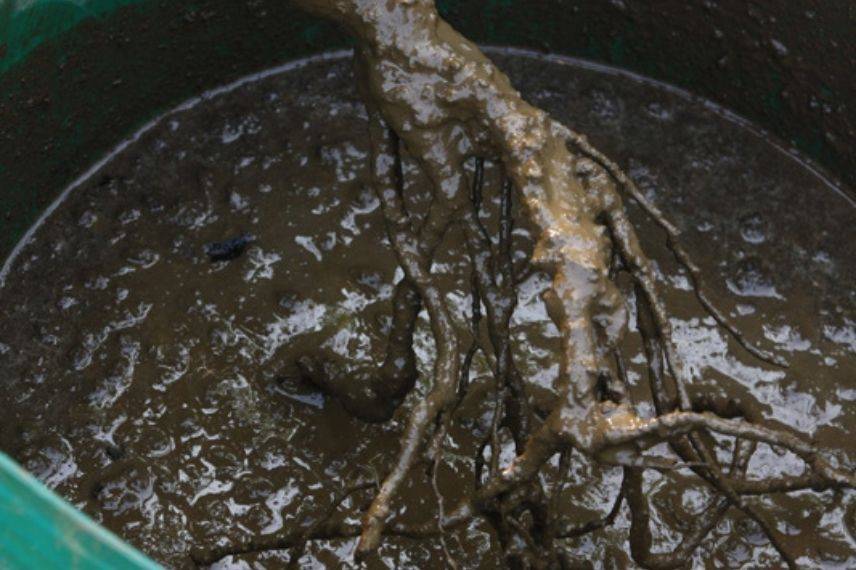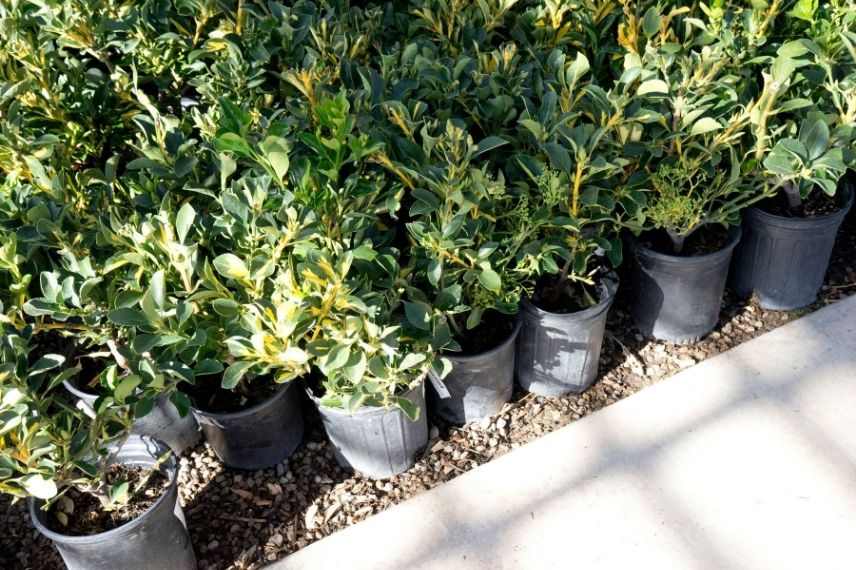
Trees and bushes: bare roots, balled, or potted?
Advantages and disadvantages of each packaging type
Contents
Trees and bushes offer an incredible diversity, catering to all tastes and meeting almost every use and cultivation constraint. From majestic conifers to unique exotic shrubs, from evergreen foliage to decorative fruit shrubs, you will surely find something to green your garden, whether it’s large spaces or small balconies.
Once you have made your choice, at the time of purchase, you will find that a new decision lies with you: to choose “the right packaging.” Whether bare roots, in pots, or in clumps, this choice will determine the purchase price and planting constraints.
So how do you differentiate between these packagings and which are best suited for trees and bushes? Let’s clarify this together.
Additionally, if you wish to install a hedge in your garden, check out our advice sheet: Hedge shrubs: bare roots, clumps, pots, potted shrubs… What to choose?
Bare root tree and bush
As their name suggests, bare root trees and bushes are sold without pots, containers, and almost without substrate.
These specimens, grown in open ground, are uprooted at the beginning of their vegetative dormancy in autumn. This is why their appearance is generally not the most appealing: bare branches, absence of leaves, flowers, or fruits. However, this appearance will not prevent them from showcasing their full potential when spring arrives. Their establishment is often easy and assured, with vigorous growth.
Which trees and bushes?
Bare root trees and bushes are generally available for deciduous varieties, such as beeches, oaks, and hornbeams, which lose their foliage at the end of the season. You will also find fruit trees, roses, young bushes and trees, standard trees, or hedge trees.
As these plants grow in open ground, they require less maintenance and regular care than potted specimens. Their packaging is also simplified: although they are delicate to handle due to their fragility, they are less bulky, easier to store, and transport costs are reduced. Their price is therefore more accessible than other packaging options.
In the case of planting in quantity, if you wish to create a hedge, a rose garden, or establish an orchard, bare root packaging offers the best value for money.
Availability and ideal planting period
Bare root specimens are only available during the dormancy period of plants, which is in autumn-winter, between October and February-March.
They must be planted immediately (outside of frost periods) to prevent the exposed roots from drying out. Not being protected by a pot or a clump of substrate, they are indeed more fragile and cannot be stored for more than 3-4 days in this state.
If you choose this packaging, ensure you have the time and means to proceed with planting quickly.
Before planting, carefully inspect the root system of the plant: the roots should be healthy, appear supple and homogeneous, show no injuries, and not develop fungi. They should also be balanced in relation to the aerial parts of the plant. Do not hesitate to remove dead, broken, or excessively long roots using sharp, previously disinfected pruning shears.
Finally, bare root specimens require an additional step before planting. To promote establishment and avoid the formation of air bubbles between the soil and the roots, we recommend coating your trees or bushes with pralin. Find all our tips for easily making your pralin in our dedicated sheet: Coating the roots of trees and bushes with pralin.

Coating of bare roots
In summary
Pros:
- value for money
- easy establishment
Cons:
- limited availability to part of the year
- immediate planting after purchase (no storage possible)
- coating of roots to be done before planting
Tree and bush in pot or container
Certainly the easiest packaging to find, whether in a traditional store, garden centre, nursery, or online: trees and bushes in pots or containers.
These subjects are grown in potting soil and require much more attention and care than a plant grown in open ground: transplanting, pruning, more regular watering… They can also be bulkier, less easy to store and transport, which affects their selling price.
For which trees and bushes?
The majority of small to medium-sized trees and bushes can be available in this packaging: roses, hydrangeas, ceanothus, laurels, potentillas…
This is the ideal solution if you want to immediately fill a gap in a hedge or a space in the garden, or to beautify an area without delay. In this case, buy your tree or bush in spring or summer to immediately enjoy its decorative qualities (leaves, flowers, fruits…).
Choose trees and bushes in containers if you have only a small area to green up, if you want to create a short hedge, or if the species are not available in other packaging.

Availability and ideal planting period
Trees and bushes in pots have the advantage of being available all year round. They can be planted in any season, avoiding obviously the extreme periods of severe winter cold or intense summer drought.
With the roots protected, planting can be delayed, and the shrubs and trees can be kept as they are for several days, even weeks, before being repotted or planted in open ground.
Planting does not require special care. To facilitate pot removal, simply immerse the plant with its pot in water for several minutes.
Be sure to check the condition of the root system before purchase: containers are often small, and plants can quickly become root-bound, which encourages the formation of a root bun. If this is the case, we invite you to consult our dedicated advice sheet to understand and avoid root bun.
After planting, especially if done in spring or before summer, remember to plan for regular watering (or install a drip system), even for varieties that will prove to be less thirsty at maturity. Indeed, while the root system develops in the first year, plants generally cannot yet draw the necessary water from the soil at depth.
In summary
Pros:
- available all year round
- planting possible all year round
- storage possible before planting
- easy and quick planting, without prior care
- wide choice of species and varieties
- immediate aesthetic effect in the garden
Cons:
- more expensive
- risk of root bun
- plastic container not very eco-friendly
Tree and bush in clod
Balled trees and bushes are becoming less common, in favour of container-grown plants. They are presented without additional packaging, with only the roots protected in the ball of soil in which they have grown, surrounded by a biodegradable net or hessian cloth (tontine).
The plants are grown directly in open fields, in a substrate that can be similar to that of your garden, if you choose them from a local nursery.
These are robust plants, with a good root system ensuring successful establishment and, generally, great vigour.
These specimens are easier to grow and require less care and maintenance than potted plants. However, their transport and storage are more challenging, which affects the selling price.
Which trees and bushes?
You will find conifers, evergreen trees, evergreen hedge shrubs, and large specimens available in balls. Albizia, Judas tree, and mimosa, for example, known for having a more delicate establishment with bare roots, can also be offered in this format.

Availability and ideal planting period
The specimens are removed from the ground when they reach a certain size, either manually or with a machine, during their dormant period in autumn-winter.
Like bare-root specimens, they are therefore only available for part of the year, between October and around March-April.
If, unlike bare-root specimens, balled trees and bushes have their roots protected by a thick layer of substrate, their planting must however take place fairly quickly (always outside of frost periods, of course). If you wait too long, the ball may indeed dry out, compromising establishment.
Upon purchase, ensure that the specimen has a nice, balanced, and well-compacted ball, indicating a healthy root system.
Planting does not require special care, except for soaking the tree or bush an hour before planting. Simply immerse the ball in a basin or bucket to rehydrate it.
In summary
Advantages:
- very good quality
- successful establishment assured
- easy and quick planting, without prior care
- no additional waste
Disadvantages:
- more expensive
- more difficult to transport
- availability limited to part of the year
- must be planted quickly after purchase (no storage possible)
- increasingly difficult to find
Read also
Evergreen tree and shrub: what are they?For further reading
- Find Olivier’s advice on what to absolutely avoid or how to fail at planting your trees in 5 lessons
- Discover the benefits of mycorrhizae on bare root plantings.
- Subscribe!
- Contents
































Comments